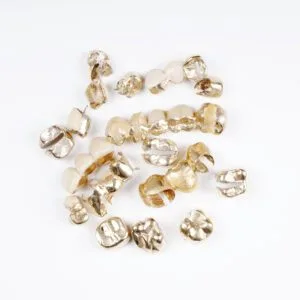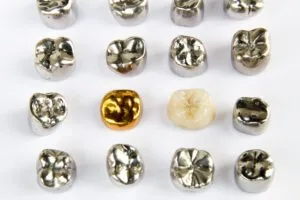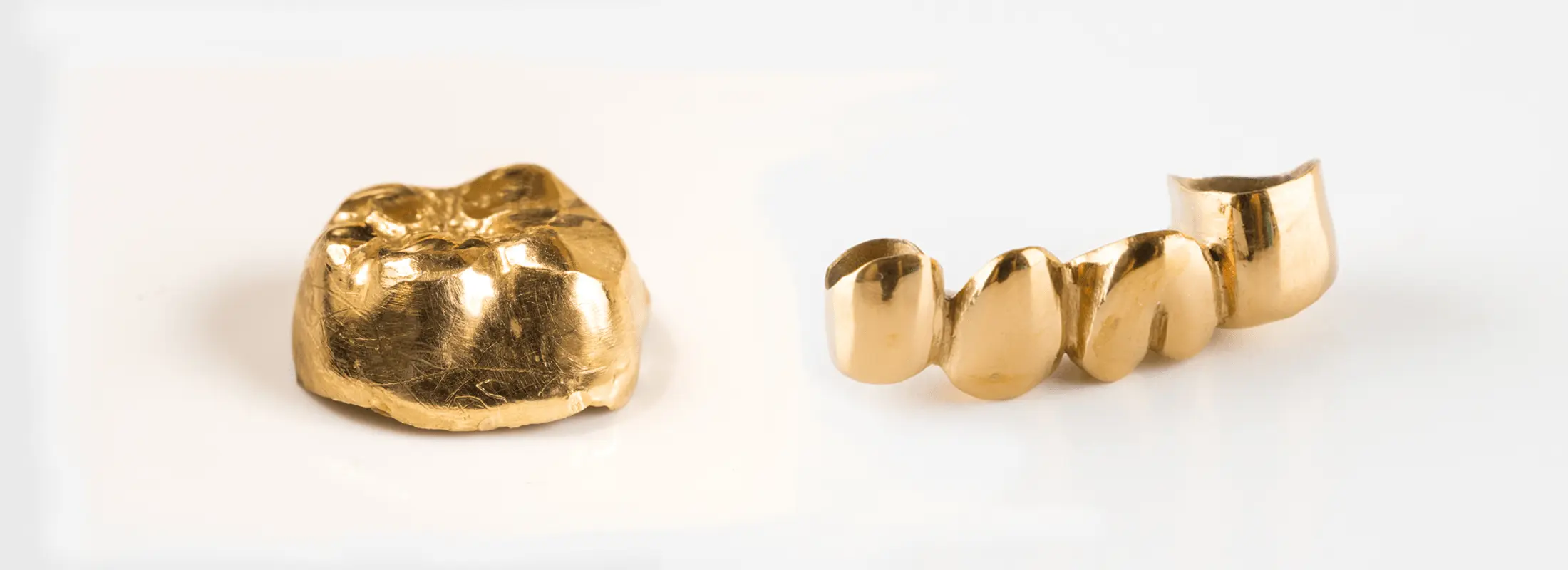Dentists use all sorts of interesting materials for the work that they do – from precious metals like gold, silver and platinum to composite resins, amalgam, titanium and more. Technology in dentistry is constantly evolving, and some of the latest and greatest advances in 2024 include 3D-printed materials, bioactive glass (which, fun fact – was originally invented for bone repair), antibacterial coatings and more.

While the new tech is fascinating, at the end of the day we’re still partial to precious metals. And no, not just because we refine them! Dentists agree that metals like gold, silver, platinum and palladium provide exceptional durability and biocompatibility, meaning they’re well-tolerated by the body and unlikely to cause adverse reactions.
There’s a handful of reasons why a dentist may choose precious metals for an implant rather than alternatives like zirconia or porcelain. Gold has several properties that make it more resistant to bacterial growth than other materials. For one, it’s non-reactive. Unlike substances that may corrode or degrade, gold does not release ions that could create a favorable environment for bacterial growth.
Gold can also be polished to create an extremely smooth surface, which is less likely to harbor bacteria than more rough or porous materials. Implants made of gold alloys also tend to last much longer than their composite or porcelain counterparts. From implant to extraction, gold offers great value to both patients and dentists.
Gold in Dental Implants
Prized for its biocompatibility, strength and workability, gold has been used to make dental crowns for centuries, making it one of the oldest materials used in dentistry. Dental gold is alloyed (mixed) with other metals like platinum, palladium, silver, copper and zinc to increase durability, as 100% pure gold would be too soft on its own.
Gold is very malleable and can be shaped into precise shapes and forms, creating a perfect fit on and around one’s teeth, ultimately resulting in a stronger seal and a better outcome. Restorations made of gold also boast the perks of longevity and recyclability, which can benefit both patients and dentists. A gold crown can last for up to 40 years, requiring minimal maintenance and fewer trips to the dentist!
Once gold crowns are eventually extracted, patients and/or dentists can send them to a refinery like Garfield for some extra cash. If you’re a dentist, dental lab tech or dental assistant, you could be monetizing your scrap to offset office expenses or generate additional profits – but more on that later.
Silver – From Fillings to Nanoparticles
The dental industry uses silver to make alloys because of its durability. Just like other precious metals, it shows a high resistance to wear. Silver fillings harden quickly and can strengthen the underlying tooth, which is beneficial for “chewing teeth” like molars.
Silver has also been incorporated into dental materials in the form of nanoparticles (extremely tiny particles of silver) due to the metal’s antimicrobial properties. (Did you know that silver is also used as an antimicrobial in water purification?) Nanoparticles can be added to composites, cements and other restorative materials that dentists use to fight harmful bacteria.

Platinum Alloys
Since platinum has a higher density than other precious metals, it’s often combined with gold to reinforce dental crowns, bridges, and inlays. Adding platinum enhances the alloy’s overall stability and helps to maintain the integrity of the material over time. Additionally, platinum’s lustrous, bright finish is aesthetically pleasing, which makes the metal ideal for use in visible restorations.
Palladium – An Affordable Alternative to Gold
Palladium has gained a lot of traction in dentistry throughout the last 50 years. Just like its other precious metal peers, palladium is highly valuable and resistant to both corrosion and bacterial growth.
Palladium is frequently alloyed with silver to produce palladium-silver alloys, which are commonly utilized in crowns, bridges, and inlays. These alloys strike a good balance between strength, durability, and cost. While gold has long been the standard material for dental restorations, palladium presents a more cost-effective alternative with comparable durability and biocompatibility. This makes palladium alloys great for patients seeking high quality without the premium cost associated with gold.
And for crowns in particular, palladium is often fused to porcelain (PFM) because it’s more rigid than gold and has a longer lifespan than all-porcelain or zirconia crowns.
Refining Your Dental Scrap
If you work at dental office or lab, sending your dental scrap to a refinery like Garfield is a great way to increase cash flow. Many of our dental clients leverage their scrap revenue to invest in new equipment and update their facilities.
The process is simple – once you ship your dental scrap to Garfield, we’ll refine it, providing you with a detailed analysis of the precious metal content along with your payment. The entire process is typically complete within 24-48 hours of receiving your material. Plus, refining ensures that your collected scrap is not wasted but instead recycled and reused, offering both financial and environmental benefits. It’s an all-around win!
Want to learn more about how dental scrap recycling can benefit your practice? Check out our other articles like ‘How Much is a Gold Crown Worth?’ and ‘How to Sell Dental Gold’.
Ready to refine your dental scrap today? Download a free shipping label to get started!

